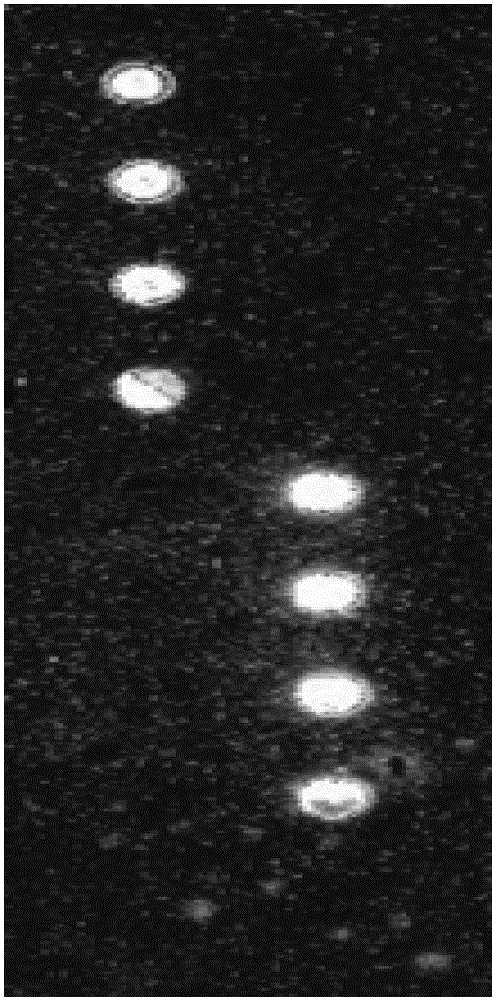Gene chip for non-invasive prenatal diagnosis of high-risk hereditary hearing loss and preparation method
A technology for hereditary deafness and prenatal diagnosis, applied in the field of genetic diagnosis, can solve the problems of high-throughput, large-scale gene polymorphism analysis, difficult to meet clinical application, complicated operation, etc., and achieve high repeatability and short time , the effect of simple operation steps
- Summary
- Abstract
- Description
- Claims
- Application Information
AI Technical Summary
Problems solved by technology
Method used
Image
Examples
Embodiment 1
[0028] Example 1. Preparation of gene chip for non-invasive prenatal diagnosis of high-risk hereditary deafness
[0029] This embodiment relates to a gene chip for non-invasive prenatal diagnosis of high-risk hereditary deafness. The preparation method of the gene chip includes the following steps:
[0030] Wash the slides with double distilled water, soak them overnight in lye, take them out, wash them three times with double distilled water, then soak them in HCl with a volume fraction of 1% for 30 minutes, and put them in a slide tank after cleaning. use. The cleaned slides were aminated with 4-aminobutyltriethoxysilane solution, and then treated with isothiocyanate with phenylisothiocyanate solution, dried with nitrogen, and placed in a 4°C place to avoid Light preservation;
[0031] The chip Zip probe is a random combination of oligonucleotide fragments with a length of 24bp. Use the BLAST function on the NCBI website to compare the homology of these oligonucleotide seq...
Embodiment 2
[0033] Example 2. Non-invasive prenatal diagnosis of high-risk hereditary deafness using gene chips
[0034] 2.1 Sample preparation
[0035] Plasma samples were prepared, and free DNA in plasma was extracted with QIAamp Circulating Nucleic Acid Kit (Qiagen, Basel, Switzerland).
[0036] 2.2 Selection of mutation detection sites
[0037] The 8 mutation sites and probe core sequences that need to be detected are shown in Table 1.
[0038] Table 1
[0039]
[0040] "del" in the mutant form means a deletion mutation, such as 35delG means the deletion of the 35th base G in the nucleotide sequence shown in SEQ ID NO.25; ">" means a substitution mutation, such as 707T>C means SEQ ID NO. The 707th base in the nucleotide sequence shown in .26 is mutated from T to C. By analogy, the positions represented by the first 5 of the above 8 mutations are in the nucleotide sequence shown in SEQ NO ID.25:
[0041] Whether the 35th base is mutated, and the 35th base G is missing;
[0042...
PUM
 Login to View More
Login to View More Abstract
Description
Claims
Application Information
 Login to View More
Login to View More - R&D
- Intellectual Property
- Life Sciences
- Materials
- Tech Scout
- Unparalleled Data Quality
- Higher Quality Content
- 60% Fewer Hallucinations
Browse by: Latest US Patents, China's latest patents, Technical Efficacy Thesaurus, Application Domain, Technology Topic, Popular Technical Reports.
© 2025 PatSnap. All rights reserved.Legal|Privacy policy|Modern Slavery Act Transparency Statement|Sitemap|About US| Contact US: help@patsnap.com



